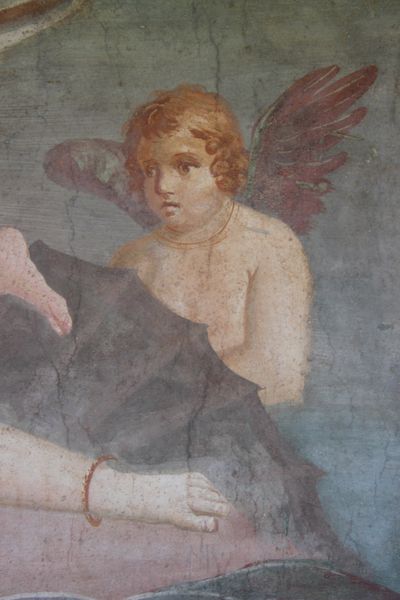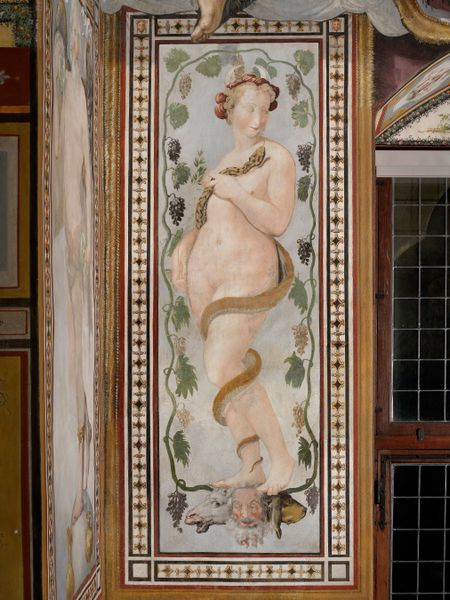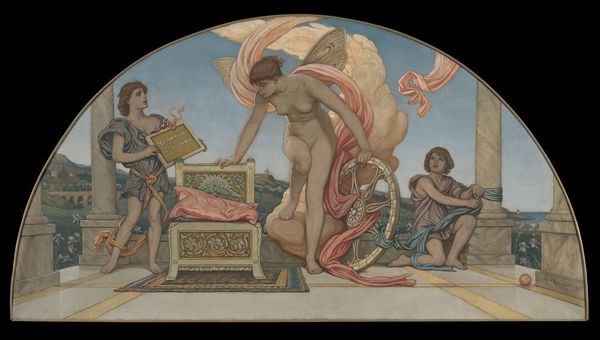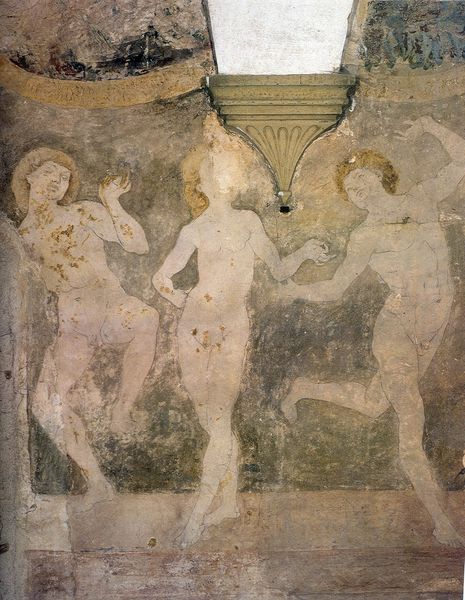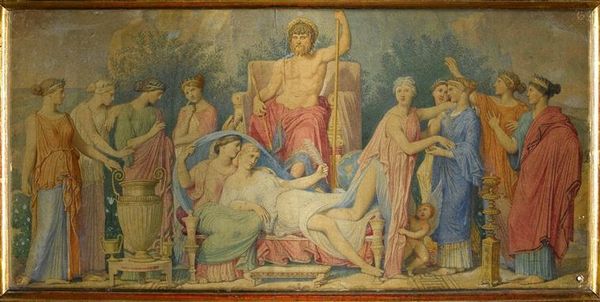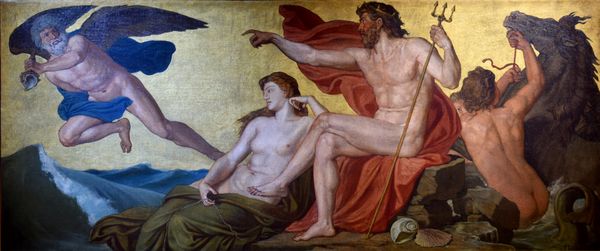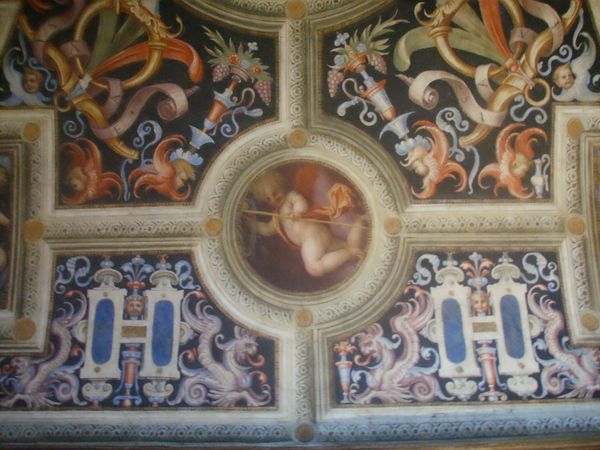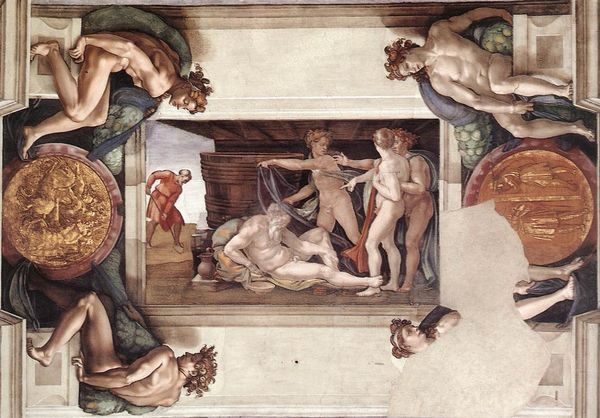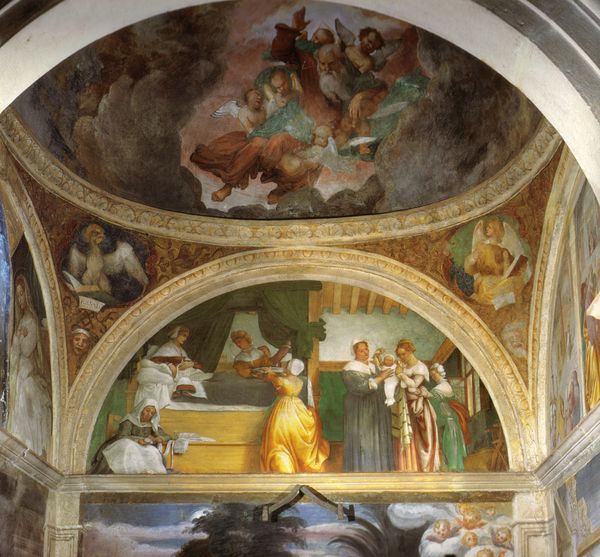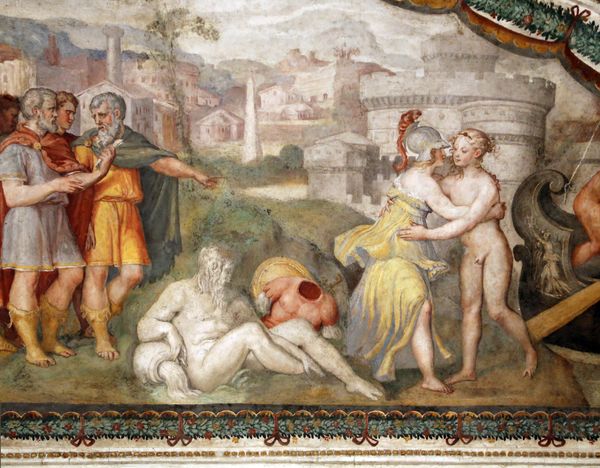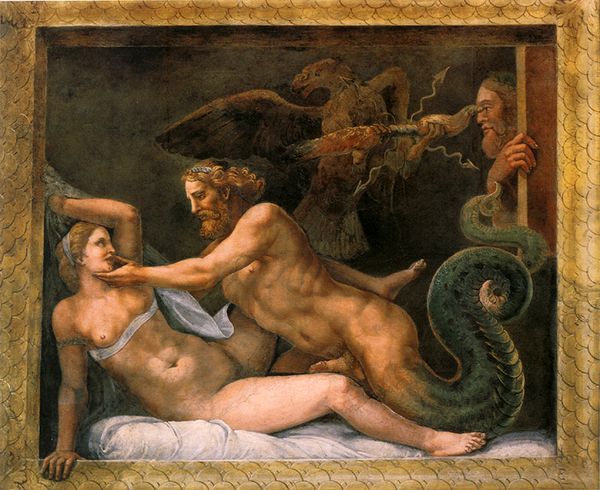
fresco
#
greek-and-roman-art
#
landscape
#
figuration
#
fresco
#
ancient-mediterranean
#
mythology
#
history-painting
#
nude
#
erotic-art
Copyright: Apelles,Fair Use
Apelles painted Aphrodite Anadyomene around the 4th century BC, a time of great artistic experimentation. In it, the goddess of love emerges from the sea, riding on a scallop shell, accompanied by winged putti. Aphrodite's birth from the sea foam is not just a tale of origin, but a potent symbol of rebirth and renewal. This motif echoes through time, appearing in Botticelli's Renaissance masterpiece, where Venus stands in a similar pose. But the scallop shell, initially a symbol of pilgrimage and rebirth, transforms into a marker of divine beauty, linking classical antiquity with the Renaissance. Consider the psychological weight of this image: the goddess emerging, a symbol of hope and beauty rising from the subconscious depths of the sea. This resonates with our own emotional journeys, reflecting the cyclical nature of life and the eternal return of beauty in the face of chaos. The scallop shell, the soft, curvaceous body, all appeal to our senses. Aphrodite, timeless and evocative, continues to engage us on a deep, subconscious level.
Comments
No comments
Be the first to comment and join the conversation on the ultimate creative platform.
